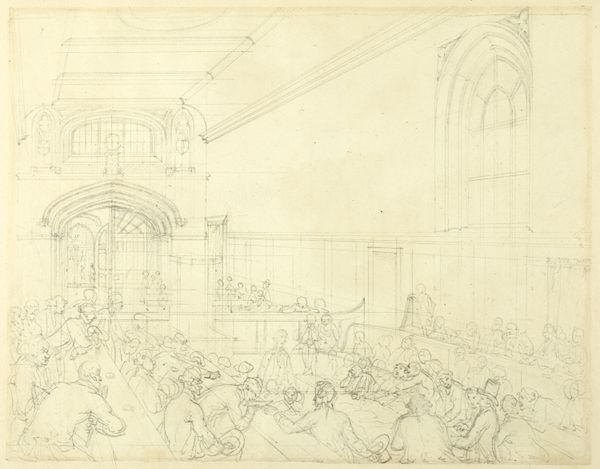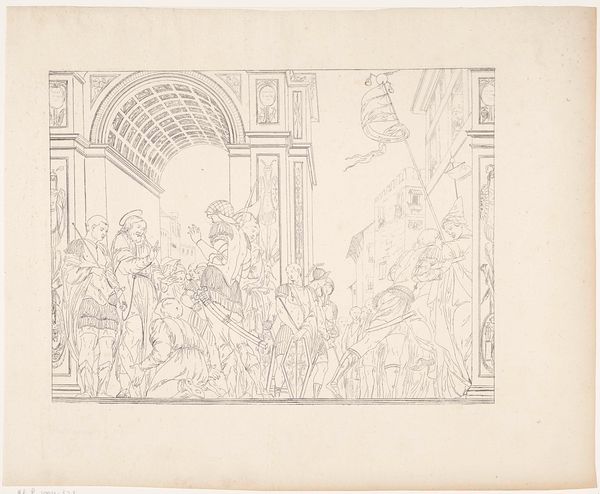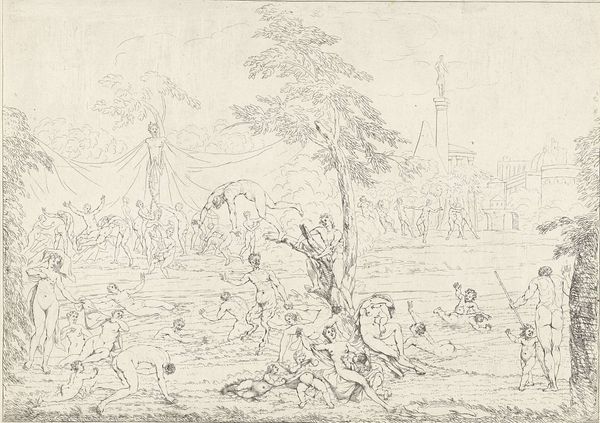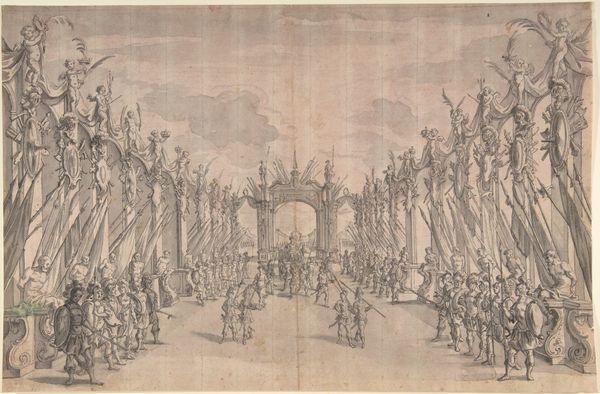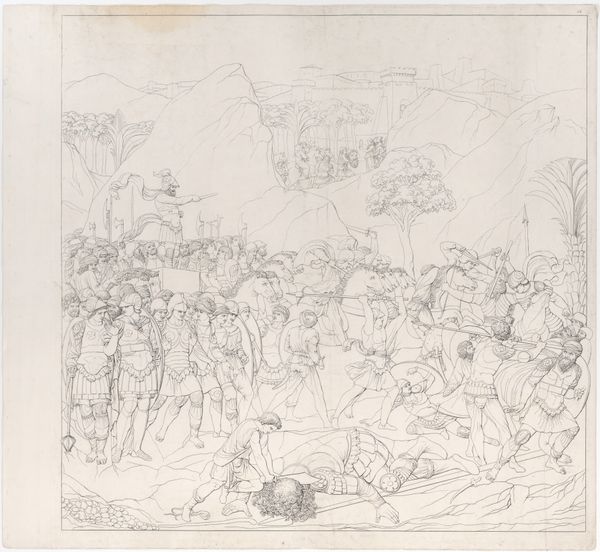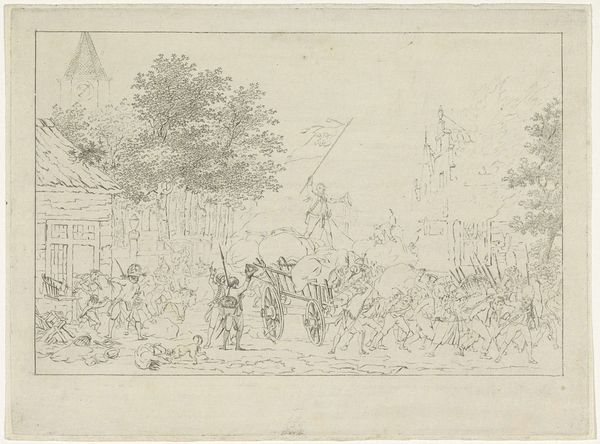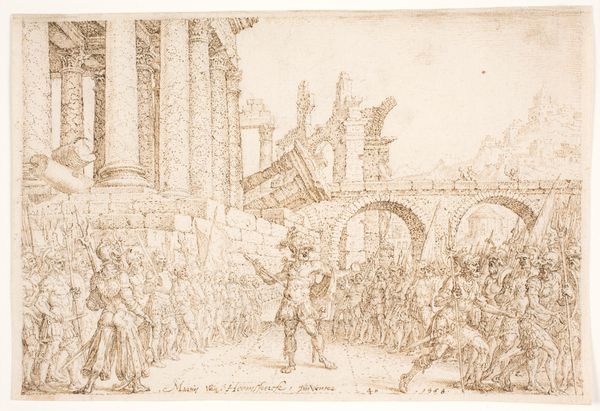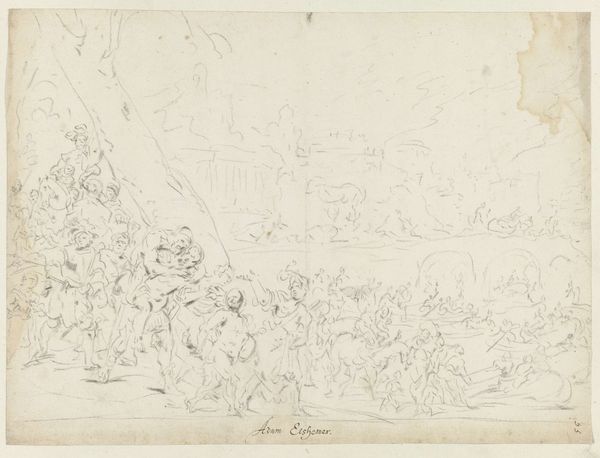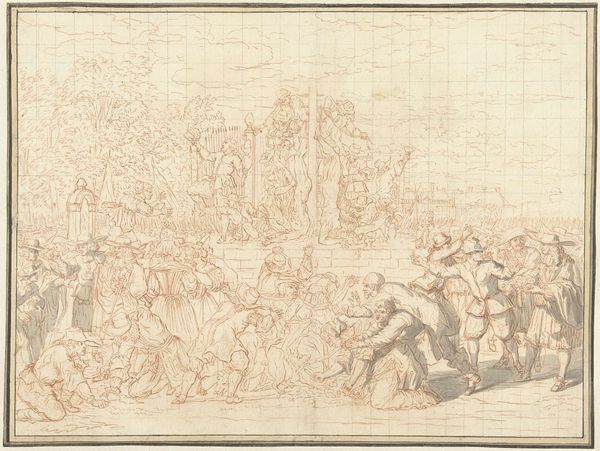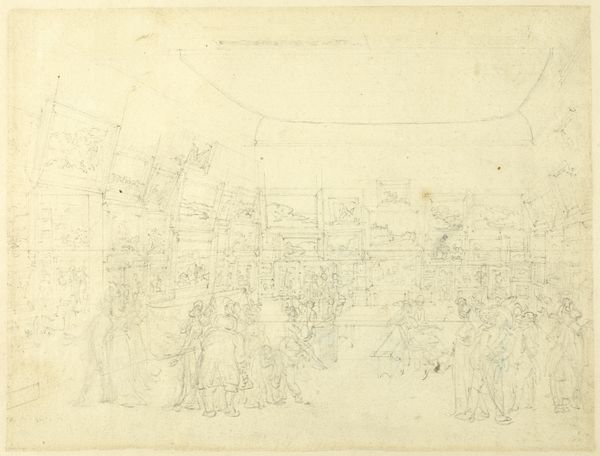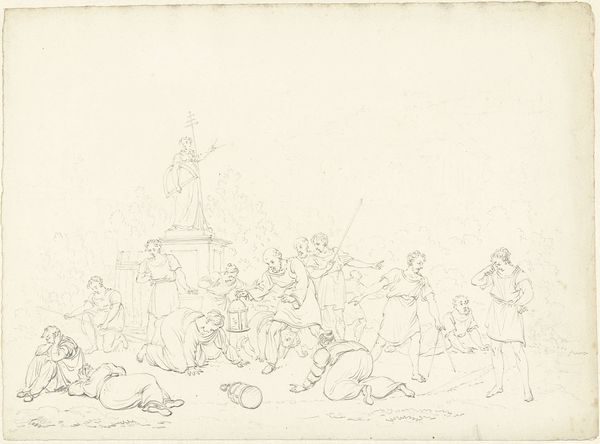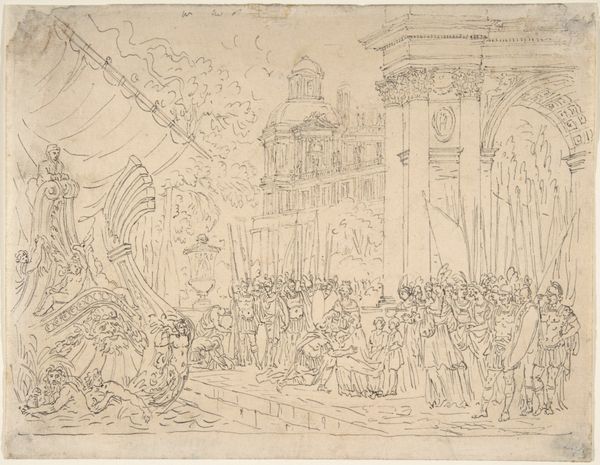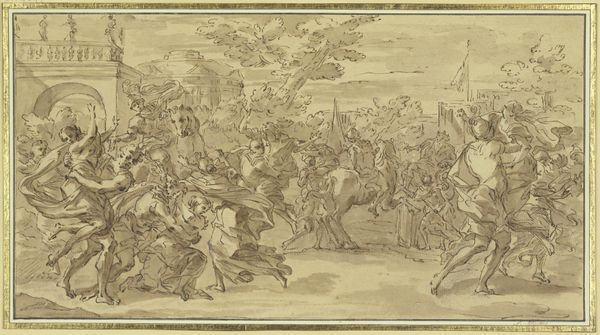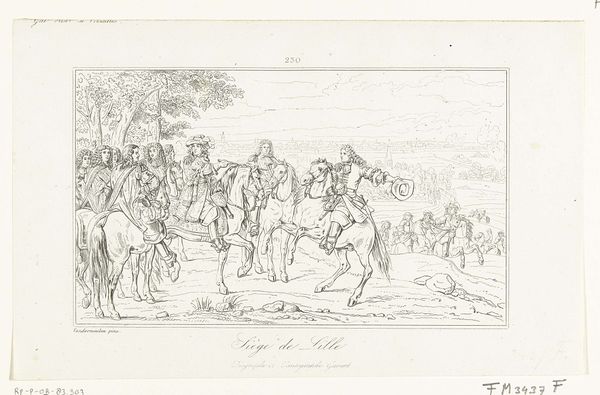
drawing, print, etching
#
drawing
# print
#
etching
#
landscape
#
etching
#
form
#
line
#
cityscape
#
history-painting
#
realism
Dimensions: height 134 mm, width 183 mm
Copyright: Rijks Museum: Open Domain
Curator: This drawing by Joannes Bemme, "Een koets rijdt door een poort," or "A carriage drives through a gate," was made before 1841. It’s an etching, offering us a glimpse into a specific moment in time, archived at the Rijksmuseum. Editor: My first thought is that it feels rather austere. The limited tonal range, the precision of the line work... it suggests formality, even restraint. What stories might be embedded here? Curator: Let’s unpack the symbolism. We see a grand carriage proceeding through an arched gateway. Gateways often function as liminal spaces, marking a transition. Given the era, this could represent not just physical passage but perhaps political or social advancement. Who is being welcomed in? Who is being kept out? Editor: I immediately key in on the archway itself. Throughout art history, arches have always been deeply loaded symbols, signaling triumph, power, and even imperial authority—think of Roman arches. The structure frames the occupants of the carriage, essentially sanctifying the procession with the weight of historical precedent. Are we to read into that? Curator: Definitely. Consider also the gazers in the background, perched almost voyeuristically upon what appear to be earthen berms. They’re onlookers, powerless yet present, a subtle commentary on the spectacle of authority. Their inclusion opens up questions about visibility, power dynamics, and social stratification inherent in the depicted scene. Is Bemme implicitly critiquing such arrangements? Editor: It’s fascinating how the artist chose to include not just the important figures in the carriage, but also these peripheral characters, scattered in the setting. We have military personnel escorting the carriage and onlookers in the field. The eye moves to each of the persons featured here as it follows the cultural context embedded within each role. They represent the visual vocabulary of this past event. Curator: Indeed. And consider the use of line itself—spare, efficient. Bemme utilizes a predominantly linear mode here to distill, document. What nuances might have been deliberately excluded? What specific message was this economy meant to convey? Editor: Thinking about all of this, it feels less austere and more a deliberate portrayal of carefully calibrated roles, symbols, and societal order, doesn’t it? I appreciate the way this deceptively simple image yields layers of significance upon closer examination. Curator: Agreed. It reminds us of the enduring power of seemingly quotidian scenes to reflect larger societal frameworks.
Comments
No comments
Be the first to comment and join the conversation on the ultimate creative platform.
